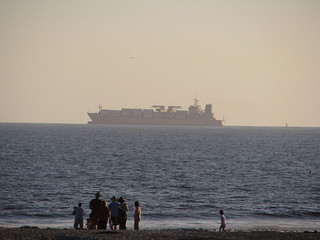 Blanked sailings have boosted average ship usage and freight rates in the trans-Pacific and Asia-Europe routes between October 2012 and February 2013, but this strategy might be hard to implement when the peak season of March and April approaches, according to Drewry’s new website Container Insight Weekly.
Blanked sailings have boosted average ship usage and freight rates in the trans-Pacific and Asia-Europe routes between October 2012 and February 2013, but this strategy might be hard to implement when the peak season of March and April approaches, according to Drewry’s new website Container Insight Weekly.
The nearly 150 blanked sailings from October to February 2013 raised average ship utilization and freight rates in the two trade lanes by as much as 7 percentage points, Drewry’s research showed.
In addition, cancelled sailings in February reduced available capacity in the headhaul Asia-West Coast North America route by an estimated 100,000 TEUs, leaving trade operating at only 90 percent strength. “The capacity reduction increased average eastbound ship utilization from the 72 percent it would have reached at full strength to a more respectable 79 percent,” Drewry said in a statement.
Blanking sailings is not new, particularly around Chinese New Year, but the duration has changed since October.
Matthew Beddow, website manager, said that while the practice is the same as withdrawing services at the end of the peak season, its effect on shippers is completely different.
“Shippers know where they stand with well-managed service withdrawals, whereas sailing cancellations sometimes confront them with unexpected space shortages, roll-overs and shut-outs, as surrounding vessels quickly fill up,” he said.
The rate changes caused by sailing cancellations also appear more volatile for shippers than those achieved through service withdrawals, with any increases being quickly lost once normal service resumes, said Drewry.
Although no sailing cancellations have yet been announced for March and April, the consultancy predicted that there would be more to come. But it added that headhaul rates from Asia to Europe and North America would nonetheless continue falling in March “unless further capacity management action is taken, or serious cargo growth outside of normal seasonal trends reappears—which is unlikely.”
Ocean carriers would probably just be in a “watch-and-wait” mode, Beddow said. “Uncertain cargo growth to Europe and the US will encourage ocean carriers to continue with short-term vessel capacity planning, which means more sailing cancellations to come. The problem will be exacerbated as service upgrades enforced by newbuild deliveries and cascading gain momentum.”
Photo: Renett Stowe




